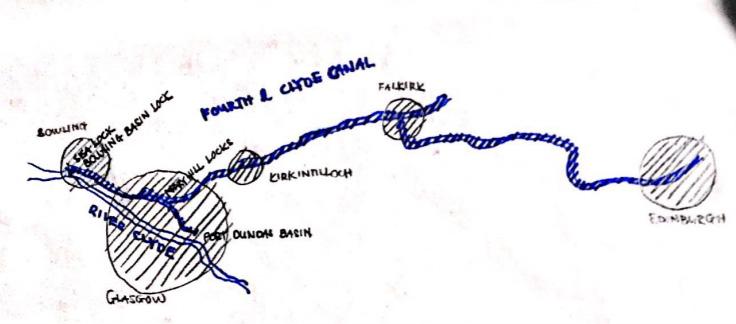
1 minute read
The Forth and Clyde Canal & Maryhill Docks
The construction of the canal, having reach Stocking field in the 1775, started to extend in two different directions, one towards Glasgow, heading to Port Dundas and the other towards the Clyde estuary at Bowling. (Smart, 2002) The Canal completed in 1790, 22 years after work on the canal has started. The development of the Forth and Clyde Canal largely impacted and contributed to the growth of Maryhill. As a result of its development, the population of Maryhill grew tremendously as the canal became a source of employment for the locals and at the same time gave opportunities to Maryhill for industrial development. (Mill, 1990) Due to the opening of the Edinburgh to Glasgow Railway in 1842, trade on the canal slowed down. By 1962, trade on the canal became so sparse and was closed at the end of the year 1963. The locks and canal then fell into neglect and became a dumping ground for rubbish. However, it still plays an important part for drainage in Central Scotland. In th1980s effort has been made to restore the canal as there was a realization that the canal could be used as a valuable trait to Glasgow. (Mill, 1990) The Glasgow Canal Project launched in 1988 aimed to reopen the can from Temple to Kirkintilloch inclusive of the Maryhill branch leading to port Dundas. A fleet of 40 vessels sailed from Falkirk to Bowling as a ceremony in the canal’s reopening on 26th May 2001. The Canal is currently in use for holidaying barge cruises from Glasgow to Falkirk or all the way to Edinburgh. (Mitchell, 2019)
Amongst the locks in Maryhill are: 21 – Maryhill Top Lock No. 21 (summit level) 22 – Maryhill Lock 23 – Maryhill Lock 24 – Maryhill Lock 25 – Maryhill Bottom Lock No. 25 (wikipedia.org, 2019)
Advertisement
Dawsholm Mill Dam beside Dawsholm Park, (Hutton, 1994.)









